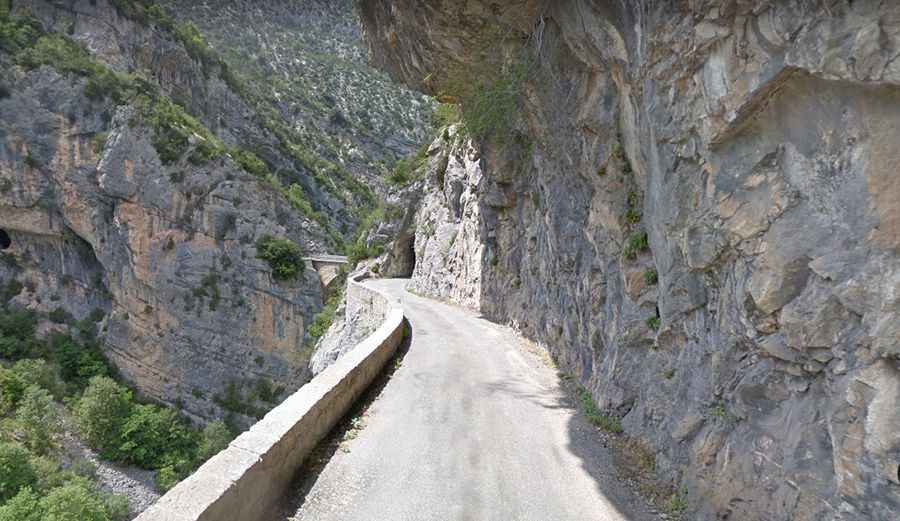Driving the Clue d’Aiglun, a balcony road in France
Explore the breathtaking Clue d’Aiglun, a stunning canyon nestled in France's Alpes-de-Haute-Provence region. Known for its challenging yet scenic road, this destination offers a thrilling drives and picturesque landscapes. It’s one of the famous French balcony roads.

Where is Clue d’Aiglun?
The clue is located in the Provence-Alpes-Côte d'Azur region, in the southeastern part of the country, to the north of Cannes.
How long is Clue d’Aiglun?
The road through the gorges carved by the Esteron river is entirely paved. It’s called D10. It’s a road cut into the rock following a narrow ledge. The most challenging part of the drive is 16.7 km (10.37 miles) long, running east-west from Roquestéron to Le Mas.
Why is the Clue d’Aiglun road famous?
There are many tunnels and galleries along the way. The single-track road has been blasted out of the mountainside and runs underneath overhanging cliffs through blind bends prior to entering a rock tunnel that exits directly onto the approach to the Pont d'Aiglun some 3/400 feet above the spellbindingly beautiful mountain 'snowmelt' river Esteron.
Is the road through Clue d’Aiglun worth it?
This part of the D10 road is a stage in some famous car rallies such as Rally d’Antibes or Grasse Alpin. The gorges are 2 km long and 200 to 400 m high. The road through the gorges is continually featured in magazines and television programs internationally linked to driving. The road, where the Estéron river flowing from the Alpes-Maritimes has carved out canyons and rock passages in the white limestone, follows a series of gorges in the hills.
How long does it take to drive through Clue d’Aiglun?
Plan about 30 minutes to complete the drive without any stops. It’s a great road through beautiful countryside with hardly any traffic. The road runs deep into the pine-covered mountainsides around where water flowing down from the Alpes-Maritimes has sculpted countless grottoes and rock passages in the white limestone. Millions of years and the slow work of erosion created the gorges.